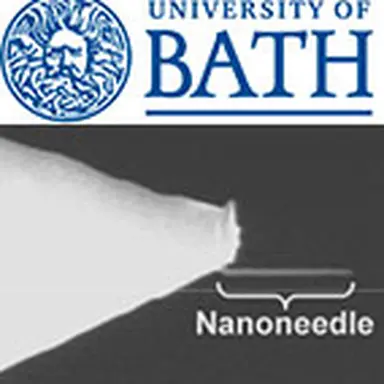
Researchers at the University of Bath are using a pioneering technique to study the properties and characteristics of our skin, in tests that could pave the way for new treatments for dermatitis, and for an improved understanding of the skin aging process.
Bath University press release
Using a minute "nano-needle" in conjunction with atomic force microscopy (AFM), scientists are studying the structure of the thin top layer of our skin, known as the stratum corneum, in the first tests of its kind.
This layer of the epidermis, typically between one-tenth and one-fifth the thickness of a sheet of paper (0.01-0.02 mm), forms the barrier that keeps water inside our bodies and microbes out. Skin scientists have long been interested in how the stratum corneum achieves this feat while maintaining its remarkable strength and elasticity.
In a new paper, published in the top-ranked Journal of Investigative Dermatology, recent Ph.D. graduate James Beard, Dr Sergey Gordeev and Professor Richard Guy demonstrate the nano-needle’s ability to probe corneocytes – the predominant cell type in the epidermis of the skin. Until this new research from Bath, it was only possible to examine the surface of the corneocyte with AFM. Now, thanks to the novel nano-needle technology, researchers can shine a light on the cell structure deep below the surface.
By examining stratum corneum samples from human volunteers, a clear difference has been demonstrated between the softer, external layer of the corneocyte and more a rigid, internal …


